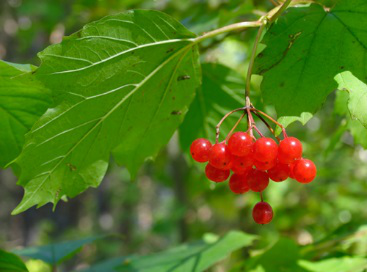Description
Botanical: Viburnum opulus
Other common names: High Bush Cranberry, Snowball Bush, Guelder Rose, King's Crown, High Cranberry, Rose Elder, May Rose, Silver Bells, Water Elder, Whitsun Rose, Black Haw Bark*
Cramp Bark sounds exactly like what it is! It has been used to relieve cramps of all kinds, including menstrual pains, and relaxes muscles and eases spasms of the lower back and legs. Moreover, Cramp Bark is said to be useful in cases of bronchial, gastrointestinal, genitourinary and skeletal muscle spasms. Cramp Bark is also said to support uterine function, help regulate excessive blood flow during menstruation and menopause, and ease postpartum, uterine and ovarian pain. The herb is also mildly sedative and helps to relieve many nervous conditions.
Country of Origin: United States.
Beneficial Uses:
Cramp Bark is said to be an effective antispasmodic that helps to relieve muscle cramps and spasms, menstrual cramps, leg and lower back spasms, and ease convulsions, lockjaw and fits. Its antispasmodic qualities were also noted in the National Formulary to alleviate asthma. Cramp Bark has also been used externally to reduce muscle pain and ache. As a skeletal muscle relaxant, it is thought to be wonderful for leg cramps.
The salicin content in Cramp Bark is an aspirin-like compound and effective as an herbal analgesic and painkiller.
As a mild sedative, Cramp Bark is believed to alleviate nervous constipation, hypertension, palpitations, hysteria, debility and other nervous complaints. Its efficacy in cases of hypertension is said to be caused by relaxing peripheral blood vessels, thus lowering high blood pressure.
Cramp Bark is thought to have an influence upon the reproductive organs and give tone and energy to the uterus and regulate uterine function. A volatile oil extracted from Cramp Bark has shown uterine sedative activity. The scopoletin content in the herb has been known to relax the uterus, helping to ease painful menstruation, relieve menstrual cramps, regulate blood flow and alleviate postpartum and ovarian pain. Interestingly, it has been shown to have both uterine-stimulant and uterine-relaxant properties, and although it was used at one time to diminish miscarriage, that application is not now recommended.
As a bitter astringent, Cramp Bark's tannins are thought to be effective in treating excessive blood loss during menstruation and menopause. Cramp bark's astringent action also benefits atonic conditions of the pelvic organs, like uterine prolapse, and is thought to diminish hemorrhage during labor and post-partum.
Recent studies have shown that Cramp Bark is active as a smooth muscle relaxant that may also be useful as a cardiotonic.
Contraindications:
Pregnant women should not use Cramp Bark Herbal Supplement unless directed by a physician. Those who are allergic to aspirin may be sensitive to Cramp Bark because of its natural salicin content. Cramp bark should not be taken with blood thinning medication because of the coumarin constituents in the plant and may cause you to bleed more easily. Cramp Bark may cause hypotension in large doses or even in average doses if given to previously hypotensive individuals. The bitter principle, viburnine, may cause gastroenteritis.


